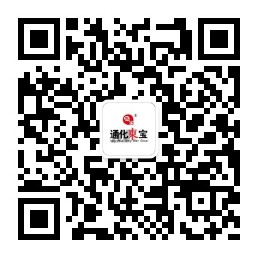Contact:
4008465777
Tonghua Dongbao: novel URAT1 inhibitor (THDBH130 Tablets) meets primary endpoint in phase IIa clinical trial
Dongbao Zixing (Hangzhou) Biopharmaceutical Co., Ltd., a wholly owned subsidiary of Tonghua Dongbao Pharmaceutical Co., Ltd. ("the Company" or "Tonghua Dongbao"), recently completed a multicenter, randomized, double-blind, placebo-and-benzbromarone-controlled Phase IIa clinical study of THDBH130 Tablets in treating adult hyperuricemic patients with or without gout. The results demonstrate that the trial has reached its primary endpoint.
THDBH130 Tablets are a highly active, selective, and safe inhibitor of the urate transporter (URAT1) and are among the Company's key novel drugs under research for gout/hyperuricemia treatment. The Phase IIa clinical trial of THDBH130 tablets has successfully met its primary endpoint, representing the Company's another milestone in gout and hyperuricemia treatment. This achievement not only underscores the Company's accelerated novel drug development but also showcases its capability and confidence in innovation, laying a solid foundation for future research efforts.
About Phase IIa clinical study of THDBH130 Tablets
The study results confirmed that the primary endpoint was met. Based on the data from this study, the product is expected to offer potential benefits in significantly reducing blood uric acid levels and in treating certain complicated or treatment-resistant gout cases.
In terms of efficacy, THDBH130 tablets can reduce blood uric acid levels in gout patients in a dose-dependent manner. At the target dose, its effectiveness in achieving a uric acid level of 6 mg/dl is comparable to that of the positive control drug, benzbromarone, but it has a distinct advantage in reaching levels of 4 and 5 mg/dl.
As for safety, the product has shown good safety and tolerance. All drug-related adverse events were mild, with no events of Grade 3 or higher. The incidence of adverse events at the target dose was similar to or lower than that seen with benzbromarone, and the incidence of acute gout attacks significantly reduced during the dosing period.
Phase I Clinical Study of THDBH130 Tablets in Subjects with Renal Insufficiency
As the Phase IIa study was underway, the Company also completed a Phase I clinical trial titled "Evaluation of Safety, Tolerability, Pharmacokinetics/Pharmacodynamics, and Glomerular Filtration Rate Measurement with Iodixanol Following a Single Dose of THDBH130 Tablets in Adult Male Subjects with Normal Renal Function or Mild-to-Moderate Renal Insufficiency". The results demonstrated no significant safety differences across various levels of renal function, and confirmed that the administered dose of the product did not affect the glomerular filtration rate.
About gout and hyperuricemia
The prevalence of gout and hyperuricemia has obviously increased in China, especially among young people, in recent years. According to the Chinese Guidelines for the Treatment of Hyperuricemia and Gout (2019) and data from the 6th national population census conducted by the National Bureau of Statistics, the overall prevalence of hyperuricemia in China is 13.3%, with approximately 177 million patients, while the overall prevalence of gout is 1.1% with about 14.66 million patients. Hyperuricemia has become the fourth most common metabolic disorder, following diabetes, hypertension, and hyperlipidemia. Gout has also become the second most common metabolic disease after diabetes.
A Frost & Sullivan analysis reveals that the number of people in China with hyperuricemia and gout will continue to increase, respectively reaching 239 million and 52.2 million in 2030, and the Chinese gout drug market is expected to grow to RMB 10.8 billion. There are two main treatments for gout and hyperuricemia: inhibiting uric acid production and increasing uric acid excretion. The existing drugs on the market still have room for improvement in efficacy and safety.










